
The best online fitness resource you'll ever need. We filter out the BS to ensure you meet your health and fitness goals!

The best online fitness resource you'll ever need. We filter out the BS to ensure you meet your health and fitness goals!
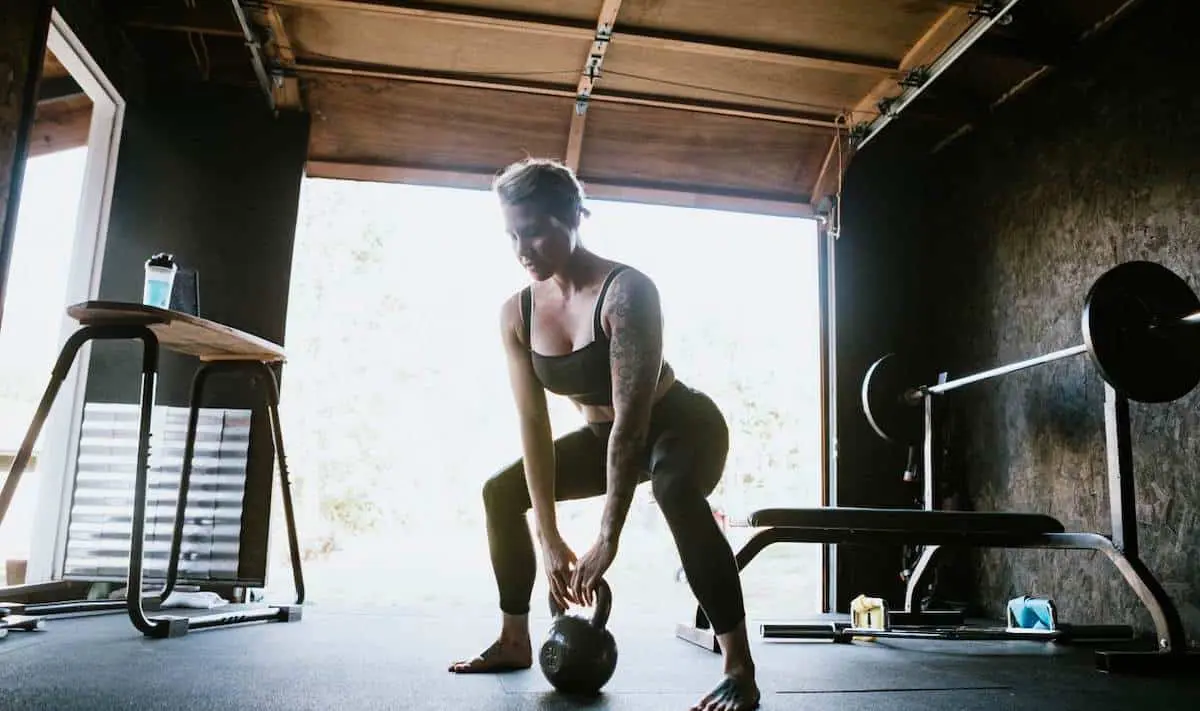
We’ve written a terrific toning and shaping workout routine for women who want to work out in the comfort and convenience of their own homes. You can get it here for free.
Women have been working out at home for decades.
I remember my mom doing calisthenics. Then, in the 80s, there was Jane Fonda’s VHS workout tapes. (Richard Simmons had a big female following also. Go figure.)
Women today are busy and motivated. Home workouts are great for ladies who don’t like the gym, don’t have one handy, can’t afford the monthly dues, or don’t have time between all their other responsibilities.
Our Women’s Home Workout Plan requires very little equipment. It includes exercises selected specifically for that equipment and for their ability to shape the body parts that ladies today care most about.
Jump to the workout plan now!
Alternatively, you can download the free PDF version of the program using the link below:
| Program style | Resistance training + cardio |
| Workout duration | 1-2 hours |
| Scheduling | 3 or 6 days a week |
| Goal | Body shaping and toning |
| Level | Beginners to advanced |
| Target Gender | Male and Female |
The program follows a Push Pull Legs structure. PPL is popular and effective. It’s easy to implement and adhere to.
Each workout will take you just under an hour to finish when calculating rest periods between each set.
There’s not a lot of cardio. If you want to do more cardio and you’re recovering completely between your workouts, fine. Just know that a lot of cardio isn’t going to make much of a difference in how you look.
It’s always helpful for cardio-respiratory fitness, and we won’t ever advise against a healthy cardiovascular system.
You will need a fully-equipped gym with machines and cables to do this routine. It’s not an at-home or outdoor program, nor one that can be done adequately in a free-weight only environment.
Our home workout for women concentrates on resistance training primarily with some low intensity cardio tossed in for metabolic benefit.
Both types of exercise are important for women. Resistance training enhances bone density–something all women need to be concerned about before it becomes an issue.
Women also seem to respond to cardio better than men. It’s been observed that cardio contributes to leanness in women more than it does in men. (Cardio for men is beneficial for heart and lung health, with very little benefit toward weight loss.)
Women need resistance training as much as men to get fit, and maybe more.
Working out with weights, pushing and pulling against resistance, puts beneficial stress on the musculoskeletal system. This contributes to bone density, which any woman knows is important as they age.
Then there’s the toning and shaping that women seek.
Lean muscle creates a more aesthetic physique and burns calories, even when resting.
Low Intensity Steady State (LISS) is now preferred by many trainers and physique coaches as the cardio of choice for general health and energy consumption. High intensity cardio is falling from favor as burning more air than cellular fuel: glycogen or fat.
During LISS, the body taps into its fat stores for a steady supply of energy. As contrasted with high-intensity exercises, where the body may rely more on carbohydrate stores.
Ectomorphs can make noticeable gains when following this plan. It’s structured as an A-B Push-Pull-Legs which takes a natural 3-day split and turns it into a 6-day plan.
The routine follows a Push-Pull-Legs A-B format. There are two sets of Push, Pull, and Leg exercises, Push A and B, Pull A and B, and Legs A and B.
The A-B split provides for additional days and exercise variety. Variety isn’t important by itself. It does expose you to several different exercises that accomplish fundamentally the same objectives. This helps prevent overtraining while getting the nuanced benefits of similar exercises.
Why the A and B divisions?
Let’s mention what A and B are not.
The A and B workouts are not to add variety and decrease boredom with a program. Thinking this would be incorrect.
You also don’t need a gazillion exercises for each body part. That’s not what A-B is about either.
The two separate Push, Pull, and Leg days allow us to keep the workouts relatively brief while exposing you–the exerciser–to several terrific exercises for each body part that can be done safely and effectively at home.
For muscles that work complex joints–like the shoulder for instance–the A and B days let us specifically address divisions of the muscles that move those complex joints in specific ways.
The pecs, deltoids, rotator cuff muscles, and even the triceps and lats, act on the shoulders, so let’s work each of those as comprehensively as possible.
This is the format:
| Day | Split |
|---|---|
| Push A | Chest, Anterior shoulders, Triceps. Compound exercise focus |
| Pull A | Back (Lats focus), and Biceps |
| Legs A | Quads, Hams, Lower legs, Glutes. Compound exercise focus |
| Push B | Chest, Anterior shoulders, Triceps. Isolation exercise focus |
| Pull B | Back (Trapezius focus), and Biceps |
| Legs B | Quads, Hams, Lower legs, Glutes. Isolation exercise focus |
PPL A-B works great for a 6-day per week schedule but can be easily adapted to a 3-day per week split where the A and B workouts are spread out over two weeks.
Here’s how you might schedule one week 6-Day PPL program with an A-B split:
| Day | Weekday | Split |
|---|---|---|
| 1 | Sunday | Push A |
| 2 | Monday | Pull A |
| 3 | Tuesday | Legs A |
| 4 | Wednesday | Rest |
| 5 | Thursday | Push B |
| 6 | Friday | Pull B |
| 7 | Saturday | Legs B |
What about Rest Day? You’ve got lots of flexibility on where you put the rest day. Traditionally, you’d put it on Day 4 after Leg Day A. There’s no unbreakable rule that you can’t take a rest on Day 7. Or Day 3.
To do this workout correctly, you’ll need some equipment. Not much. All of it is space efficient, so you won’t need a lot of surplus square footage for storage.
Plan to invest about $1000 US to outfit your home gym.
If you add the dumbbells, expect to spend about $1400. It will be a worthwhile and lasting investment.
Dumbbells arguably are the most versatile training tool. Cables would be the other, however cables consume a lot of space and they’re expensive.
Dumbbells for the win.
Fixed weight or selectable dumbbells both work for this workout. My personal preference is the selectable variety, like the Bowflex SelectTech 552 model.
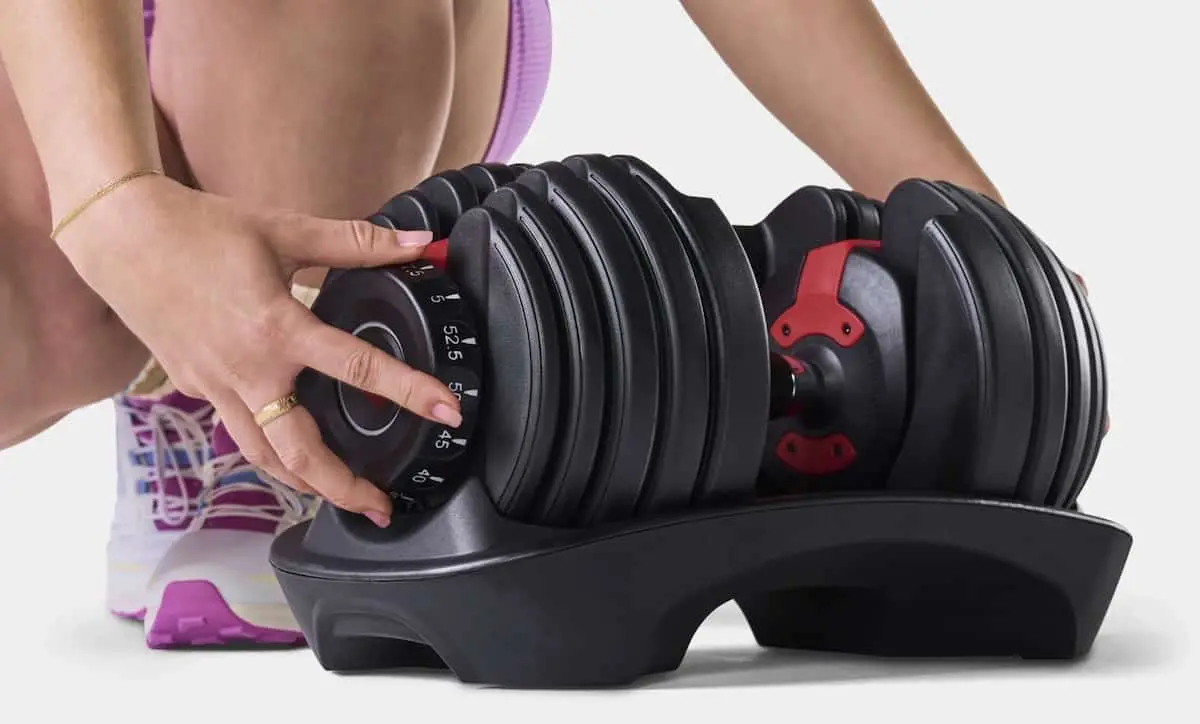
Numbered dials mark weight. They have a tapered design that’s ergonomic, a rubberized grip, and they’re attractive as far as lifting equipment goes. Who among us doesn’t want good-looking stuff in our homes.
Other manufacturers make excellent dumbbells also; it’s a competitive market, so you’ll be able to find some that fit your budget and are safe.
If you’ve got space in your home, fixed weight dumbbells work well. You’ll want to get a linear or tree rack to store them so that your home gym doesn’t look like a playroom.
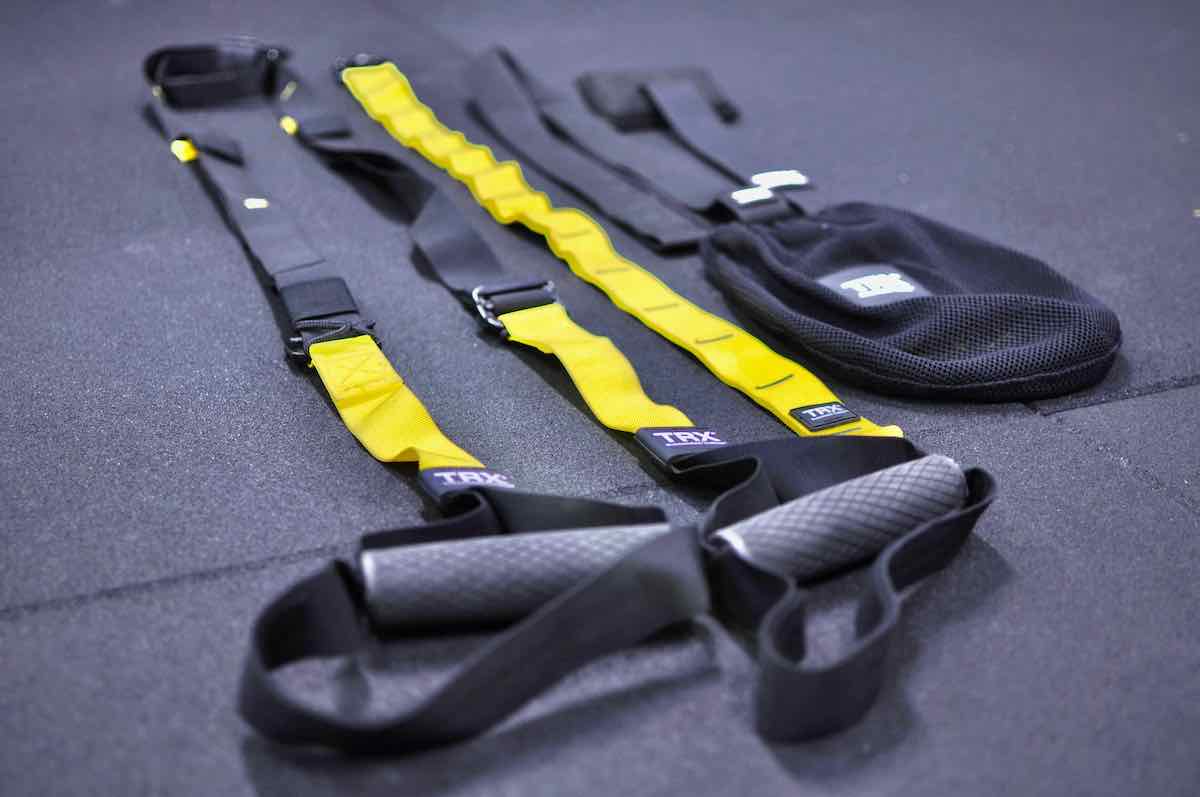
Suspension trainers, like TRX Training’s TRX Home 2 system, empower the user to do dozens of exercises utilizing only their body’s weight. Add a weighted vest, and you’ve got more resistance.
Depending on how the body is positioned in relation to the anchor point of the device, resistance can be increased or reduced.
Suspension trainers economize on space. They’re light, store easily, and portable.
They can be looped over a door, or mounted to a fixed hook on the wall or ceiling.
Invest in a sturdy, commercial grade adjustable bench. You’ll want this for durability and safety. Your bench is no place to economize. Life Fitness offers some well-designed ones, like this HammerStrength model shown below.
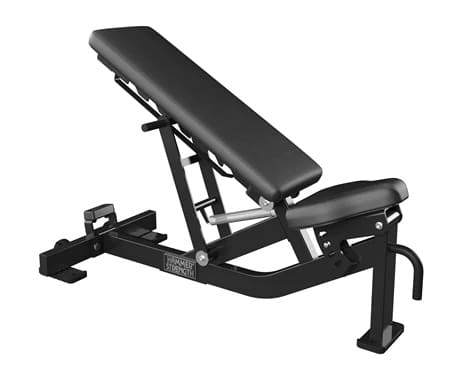
A good bench will set you back several hundred dollars US. Be cautious of any bench that’s less than about $200US. There may be some good ones out there but that price point seems low.
What you’re looking for is a welded frame of thick structural steel. Avoid feet and supports that are bolted together.
Personal reco: opt for benches that are the same width from one end to the other. Several brands are offering benches with flared boards near the seat. That design limits your exercise selection, pullovers and split squats for instance.
Ankle weights are an old-school fitness appliance that I’ve included here for one exercise, and it’s a good one: the Side-Lying Hip Abduction.
It’s worth special mention.
Lie on one side with legs and feet together and an ankle weight on the top leg. Next, with feet pointed straight (toward a wall), raise that top leg that’s got the weight attached. Raise it as high as you can and pause it if you can for a count of 1 or 2.
Repeat.
These are way tougher than they sound. They can humble some of the baddest lifters out there because they specifically target the glute medius that doesn’t get a lot of individual love.
Do these consistently for a few weeks and be prepared for your pants to fit differently in a good way.
You can also use these if you ever go for a walk or run to make it that little bit more challenging.
Invest in ankle weights with little pockets (like these by Sportsneer) that can be made heavier or lighter by adding or removing sandbags. I own a pair by a different manufacturer that have small metal cylinders that each weigh 1lb (.45kg).
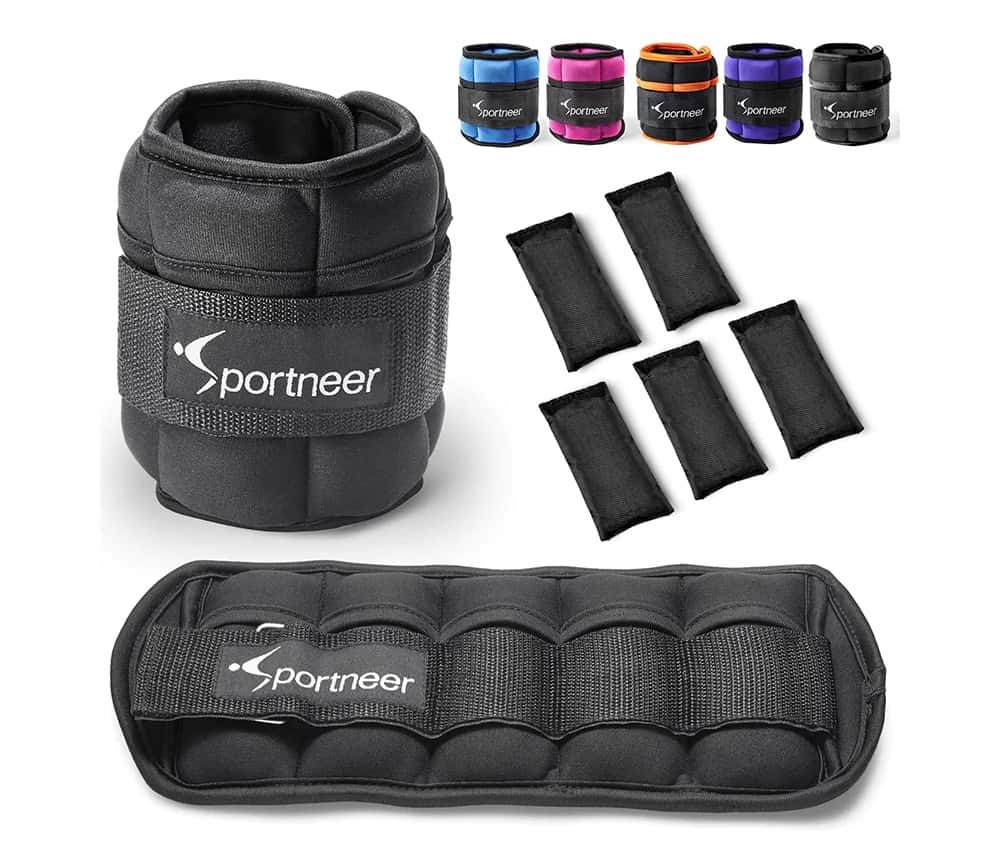
Color selection is a plus. Unlike bands and tubing, colors don’t indicate weight difference.
For cardio exercise, an exercise bike makes a lot of sense. My personal favorite is the AssaultBike Classic Stationary Bike.
It combines the ability to perform low impact exercise and involves both the arms and legs. An added plus is that the speed is rider-governed. If you want to speed up, pedal or row harder.
Both the arms and legs get involved and create a breeze for the rider in the process.
The AssaultBike Classic tops competitors in my opinion because of the upper body involvement. The rider can shift the workload from legs to arms and back again as desired.
So, once the legs get tired, the arms can take over. You can do arms-only for a while, then legs, then both, and so forth. Lots of options, which add interest and fun.
The Assault bike costs about $700 US.
| Exercise | Set 1 | Set 2 | Set 3 | Set 4 |
|---|---|---|---|---|
| Chest Press | 15-20 | 10-12 | 8-10 | 8-10 |
| High Incline Chest Press | 15-20 | 10-12 | 8-10 | 8-10 |
| Front Raises | 15-20 | 10-12 | 8-10 | 8-10 |
| Dumbbell Triceps Extensions | 15-20 | 10-12 | 8-10 | 8-10 |
| Exercise | Set 1 | Set 2 | Set 3 | Set 4 |
|---|---|---|---|---|
| Dumbbell Hammer Curls or Palms-up Curls | 15-20 | 10-12 | 8-10 | 8-10 |
| TRX Rows | 15-20 | 10-12 | 8-10 | 8-10 |
| Rear Deltoid Flyes | 15-20 | 10-12 | 10-12 | 10-12 |
| Chest Supported Dumbbell Rows | 15-20 | 10-12 | 8-10 | 8-10 |
| Exercise | Set 1 | Set 2 | Set 3 | Set 4 |
|---|---|---|---|---|
| Heel Elevated Squats, Goblet or At Sides | 15-20 | 10-12 | 8-10 | 8-10 |
| Romanian Deadlifts (RDLs) or Single-Leg B-Stance RDLs | 15-20 | 10-12 | 8-10 | 8-10 |
| Reverse Lunges | 15-20 | 10-15 | 10-12 | 8-10 |
| Calf Raises | 15-20 | 15-20 | 15-20 | 15-20 |
| Exercise | Set 1 | Set 2 | Set 3 | Set 4 |
|---|---|---|---|---|
| DB Pullovers | 15-20 | 10-12 | 8-10 | 8-10 |
| Low Incline DB Chest Presses | 15-20 | 10-12 | 8-10 | 8-10 |
| Lateral Raises Face forward on high incline bench arms slightly to the front (scaption, 15-20 degrees) | 15-20 | 10-12 | 8-10 | 8-10 |
| TRX Triceps Extensions | 15-20 | 10-12 | 8-10 | 8-10 |
| Exercise | Set 1 | Set 2 | Set 3 | Set 4 |
|---|---|---|---|---|
| Biceps Curls | 15-20 | 10-12 | 8-10 | 8-10 |
| Dumbbell Rows | 10-12 | 10-12 | 8-10 | 8-10 |
| Dumbbell “I” or “Y” Raises Face forward on high incline bench | 15-20 | 10-12 | 10-12 | 10-12 |
| TRX Face Pulls | 15-20 | 10-12 | 10-12 | 10-12 |
| Exercise | Set 1 | Set 2 | Set 3 | Set 4 |
|---|---|---|---|---|
| Bulgarian (RFE) Split Squats | 15-20 | 10-12 | 8-10 | 8-10 |
| TRX Squat Rows | 15-20 | 10-12 | 8-10 | 8-10 |
| Straight Leg Deadlifts | 15-20 | 10-15 | 10-12 | 8-10 |
| Hip Abductions (Side-lying) | 15-20 | 15-20 | 15-20 | 15-20 |
| Calf Raises | 15-20 | 15-20 | 15-20 | 15-20 |
| Tibialis Anterior Raises | 20 | 20 | 20 | |
| LISS** (Treadmill or Exercise Bike) | 45 min LISS |
Application is half of a routine. Exercises alone mean little if not put in the context of the entire workout and lifestyle.
Some things just work all the time. Observe all the resistance training basic rules of thumb for the ectomorph program as for any other resistance training routine.
These include progressive overload, judicious attention to Reps In Reserve (RIR), rep cadence, rest and recovery.
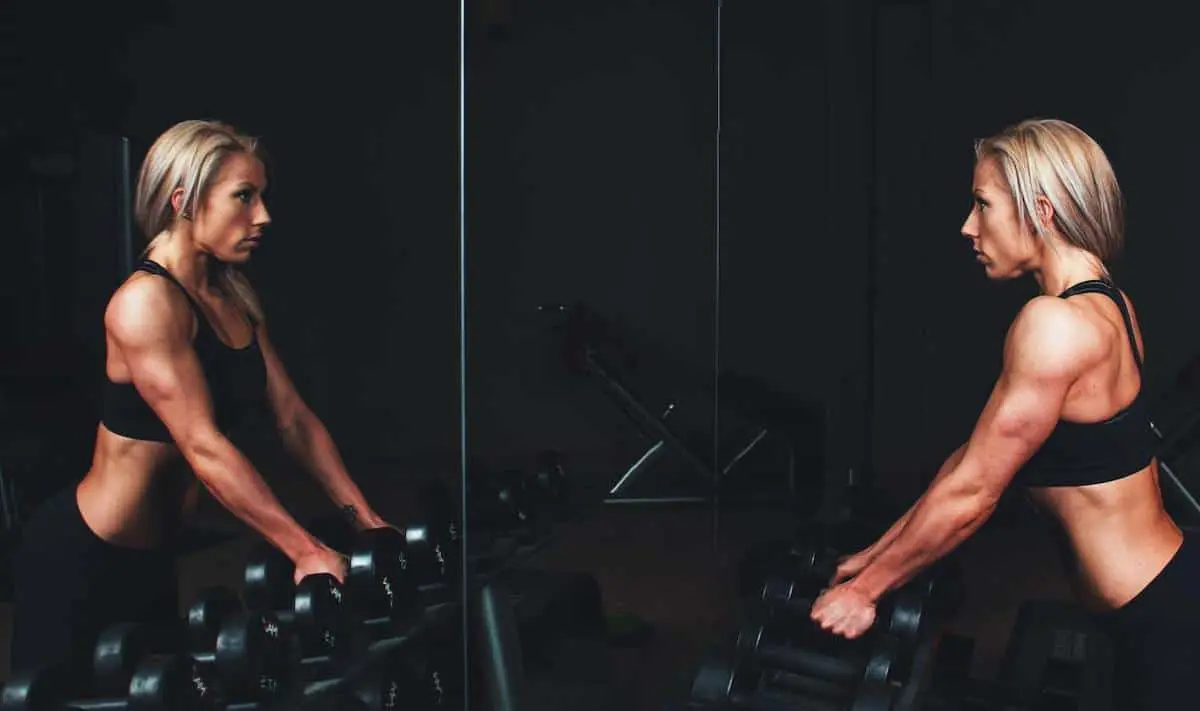
When you get better at something, you can do more of it.
That’s the idea with progressive overload. Start with a load and an exercise volume that’s barely achievable, keep doing it until it’s easy, then make it difficult again.
Example:
Let’s say the program calls for 4 sets of 8 to 12 reps. You can lift 10kg/20lb dumbbells for 8 reps for 2 of those sets, but only 7 for the other 2.
You keep doing the program.
Continue using that amount of weight until…
You can lift the 10 kg for 12 reps–maybe even 13–for all 4 sets.. Next workout, use the next heavier dumbbell and start the process again.
Progressive Overload is universally recognized as fact, that when followed, the exercise will result in muscular shape, density, and strength.
Fortunately for everyone involved, the fear women had about “getting big” from lifting weights is slowly abating, although we still hear it occasionally. Ladies, unless you’re taking anabolics, you will not “get big”.
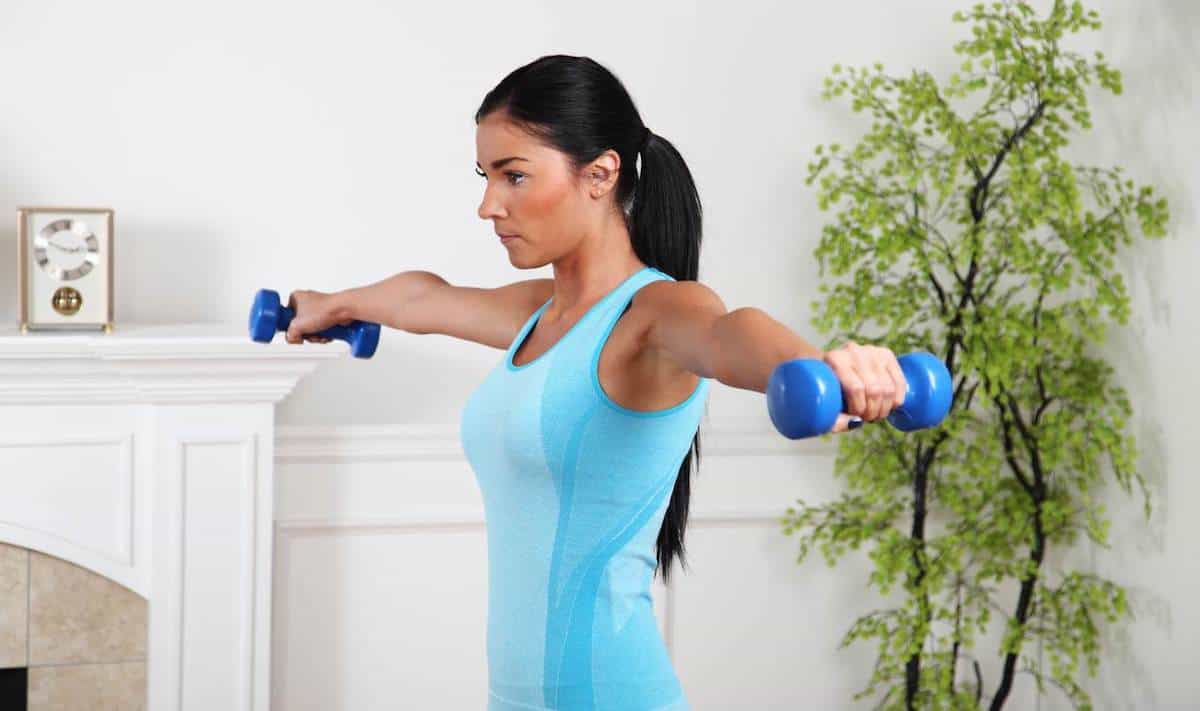
Clients have told me that the rule of thumb of 2 seconds for the eccentric phase (descending on squats and lowering a dumbbell for curls for instance), and 1 second for the concentric “lifting” phase is a helpful rep cadence.
The numbers don’t need to be exact. What you’re after is control of the weight.
Don’t let the weight move you; you move the weight, and do so purposefully. This routine includes no plyometrics or momentum-enabled exercises.
Some of the best physiques in the world were built and maintained by working out 3 days a week, and maybe 4. Working out 5, 6, 7, or even every day is a fairly recent development.
The A-B PPL format provides a lot of flexibility, yet adapts well to a 3-day-per-week cycle.
There’s no rule that you can’t do PPLP (Push Pull Legs Push [again]) during a calendar week, if you want a 4-day routine. And of course, PPL makes nothing but sense for a 6-day cycle, if you think you need to work out that much (and you probably don’t).
Getting quality sleep is important to anyone, and more so for individuals who are working their bodies hard. 7 to 8 hours is minimum. 9 to 10 is even better if you’ve got that much time to devote to bed. That’s the amount of sleep athletes get.
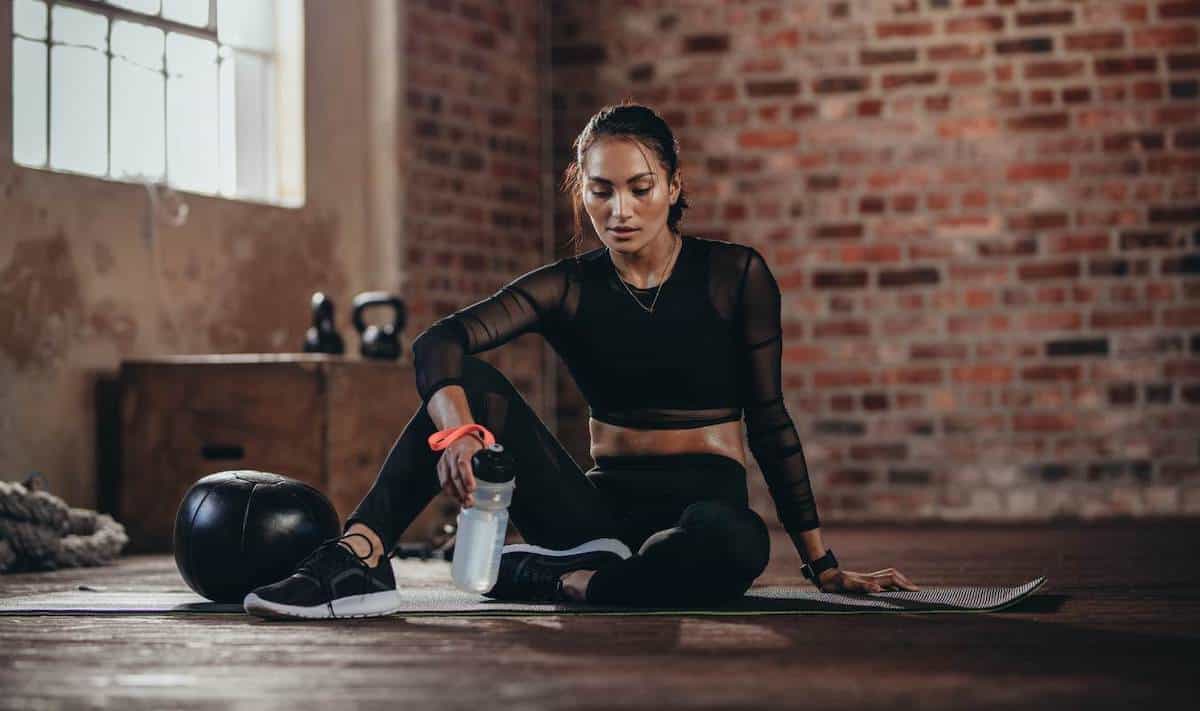
Rest a minute or 2 between warm-up sets but more for your harder sets and 3 minutes between sets 2, 3, and 4. The latest clinical evidence points to 3 minutes being best if you’re lifting the right way.
While you’re resting, visualize your next set in your head. Think about what you could do better in the next set.
Download our Women’s Home Workout Plan PDF below:
We offer customized programs. If you like what you see here in the downloadable program and would like it customized for your specific gym equipment or body type, we can do that. Comment or Drop us a line!.